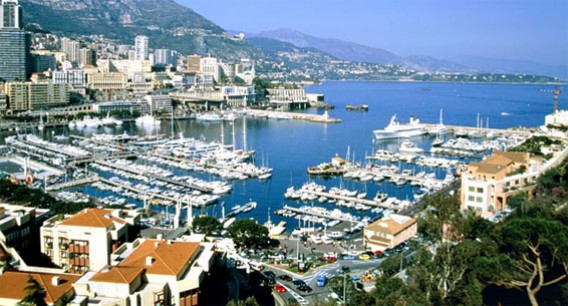















May 08, 2012 | permalink

In Aerotropolis, I describe what might be called the “Dubai Effect,” i.e. the emirate’s overbuilding during the boom for a transient population of millions who inhabit the city only a few fleeting moments at a time. Rem Koolhaas realized it first:
The architect Rem Koolhaas barely came to grips with this while designing Waterfront City, Nakheel’s abandoned city within a city within a city (and the collateral on Dubai World’s debt). “There is a weird alternation between density and emptiness,” he confessed. “You rarely feel you are designing for people who are actually there but for communities that have yet to be assembled.” He learned that its “density is virtual. Almost everybody who lives in Dubai also lives somewhere else . . . The actual inhabitation of the city is a fraction of its maximum capacity.”
Now the trend toward “absenteeism” has gone global:
“The more money you have, the more rootless you become because everything is possible,” says Jeremy Davidson, a property consultant who specialises in properties that cost £10m or more in the most sought-after postcodes in London.
“I have clients who wake up in the morning and say, ‘Let’s go to Venice for lunch.’ If you’ve got that sort of money the world becomes a very small place. They tend to have a diminished sense of place, of where their roots are,” he says.
This increasingly global lifestyle has led to the stateless super-rich buying a larger portion of the world’s most expensive homes as they look to park their wealth in perceived havens. On average they own four to five properties, usually consisting of two in their country of principal residence, one in a “global city” such as London, Paris or New York, and a holiday home in a hot climate – or one in the Alps.

» Folllow me on Twitter.
» Email me.
» See upcoming events.

Greg Lindsay is a generalist, urbanist, futurist, and speaker. He is a non-resident senior fellow of the Arizona State University Threatcasting Lab, a non-resident senior fellow of MIT’s Future Urban Collectives Lab, and a non-resident senior fellow of the Atlantic Council’s Scowcroft Strategy Initiative. He was the founding chief communications officer of Climate Alpha and remains a senior advisor. Previously, he was an urban tech fellow at Cornell Tech’s Jacobs Institute, where he explored the implications of AI and augmented reality at urban scale.

January 31, 2024
Unfrozen: Domo Arigatou, “Mike 2.0”
January 22, 2024
The Future of Generative AI in Architecture, Engineering, and Construction
January 18, 2024
The Promise and Perils of the Augmented City
January 13, 2024
Henley & Partners: Generative AI, Human Labor, and Mobility

----- | January 22, 2024
The Future of Generative AI in Architecture, Engineering, and Construction
----- | January 1, 2024
----- | August 3, 2023
CityLab | June 12, 2023
Augmented Reality Is Coming for Cities
CityLab | April 25, 2023
The Line Is Blurring Between Remote Workers and Tourists
CityLab | December 7, 2021
The Dark Side of 15-Minute Grocery Delivery
Fast Company | June 2021
Why the Great Lakes need to be the center of our climate strategy
Fast Company | March 2020
How to design a smart city that’s built on empowerment–not corporate surveillance
URBAN-X | December 2019
CityLab | December 10, 2018
The State of Play: Connected Mobility in San Francisco, Boston, and Detroit
Harvard Business Review | September 24, 2018
Why Companies Are Creating Their Own Coworking Spaces
CityLab | July 2018
The State of Play: Connected Mobility + U.S. Cities
Medium | May 1, 2017
Fast Company | January 19, 2017
The Collaboration Software That’s Rejuvenating The Young Global Leaders Of Davos
The Guardian | January 13, 2017
What If Uber Kills Public Transport Instead of Cars
Backchannel | January 4, 2017
The Office of the Future Is… an Office
New Cities Foundation | October 2016
Now Arriving: A Connected Mobility Roadmap for Public Transport
Inc. | October 2016
Why Every Business Should Start in a Co-Working Space
Popular Mechanics | May 11, 2016
Can the World’s Worst Traffic Problem Be Solved?
The New Republic | January/February 2016